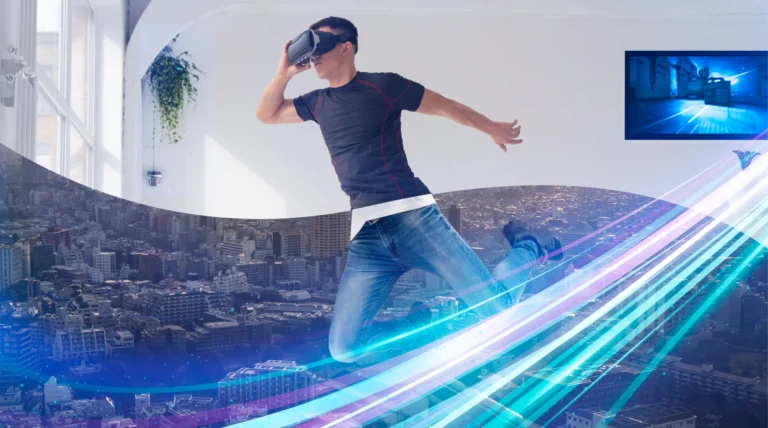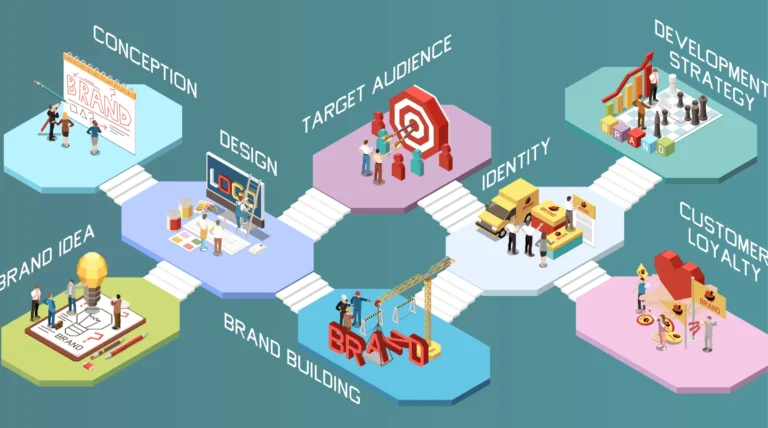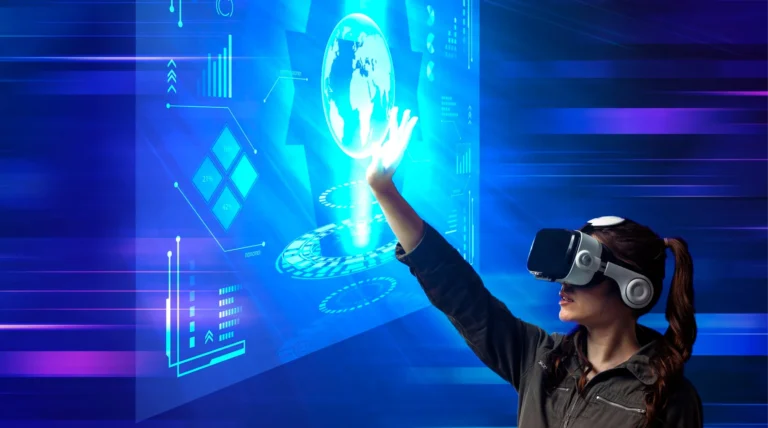The future of CGI in marketing is bright and excited. It allows brands to create amazing visual content that grabs people’s attention. From realistic product images to personalized experiences, CGI will change how businesses connect with customers, making their messages more engaging and effective.
The computer-generated industry has revolutionized the field of marketing in recent years. This technology allows brands to create lifelike images and animations previously only possible in traditional photography or video production.
The use of CGI in marketing has become increasingly significant as brands seek to create more dynamic and engaging content for their audiences. From creating hyper-realistic product visuals to producing visually compelling virtual environments for advertising campaigns, CGI offers unmatched creativity and flexibility.
Understand the current trends of CGI in marketing and advertising and how you can use it to unlock new opportunities for innovation and creativity in your advertising campaign.
Current landscape of CGI in marketing

The current landscape of digital images in marketing is rapidly expanding as brands and advertisers continue to harness the capabilities of this technology to create immersive and engaging content for their audiences. CGI plays a special role in marketing and advertising, including product visualization, virtual environment, animation, and motion graphics.
- Product visualization: It allows brands to create photorealistic renderings of their products, giving consumers a detailed and interactive view of the product before making a purchase decision.
- Virtual environments: CGI creates virtual environments for advertising campaigns, allowing brands to transport consumers to new and exciting worlds that help tell a story or showcase a product or service.
- Animation and motion graphics: It creates animated commercials, explainer videos, and other dynamic content that capture the audience and effectively communicate a brand’s message.
Additionally, several industries leverage computer graphics to create stunning and immersive experiences. Here are a few examples of how computer-generated images are currently being used in marketing and advertising across different industries.
- Retail – retail brands use CGI to create visually stunning product visuals and virtual try-on experiences that enhance online shopping for consumers.
- Automotive – they use computer graphics to create realistic car renderings and animations for advertising mountains and virtual showrooms.
- Real estate – in this industry, computer-generated models are used to create virtual tours of properties, allowing potential buyers to explore homes and apartments from the comfort of their computer or device.
- Entertainment – the entertainment industry uses CGI to create immersive movie trailers, video game cinematics, and virtual reality experiences that captivate audiences and drive engagement.
- Fashion and beauty – for this industry, digital renderings aid in creating virtual models, showcase clothing and accessories in digital environments, and even simulate makeup looks on virtual faces. Brands also use it to create hyper-realistic product visualizations for online and print marketing materials.
- Healthcare and pharmaceutics – in the healthcare and pharmaceutical industries, computer graphics create 3D animations of medical procedures and showcase drug mechanisms of action, and disease processes for educational materials and marketing campaigns. CGI also aids in creating visually engaging content for patient education and medical device promotion.
- Tourism and hospitality – hotels, resorts, and travel agencies leverage CGI to create virtual tours of their properties, showcase amenities, and highlight destination attractions. Computer models are also used to create immersive travel experiences and promotional videos that inspire wanderlust and drive bookings.
- Technology and electronics – technology companies use computer-generated imagery to showcase the features and functionalities of their product in a visually compelling way. CGI is also used to create product demonstrations, interactive 3D models, and futuristic concepts to engage consumers and showcase the capabilities of new technologies.
- Food and beverages – in the food and beverage industry, computer graphics are used to create mouth-watering product visuals, animation of cooking processes, and virtual dining experiences. Brands use CGI to showcase their food and beverage offerings in an appetizing and engaging manner, enticing consumers to try their products.
Overall, CGI has become a versatile and essential tool for marketers and advertisers across several industries. By harnessing the power of CGI, brands can create visually stunning and immersive content that captures consumers’ attention, drives engagement, and ultimately leads to increased brand awareness and sales.
Emerging trends in CGI marketing

The new and emerging trends in marketing and advertising are continuously shaping the way brands use computer general images to engage with their contributions and tell their stories. Here are some key trends you should consider when promoting your business through computer graphics.
Augmented Reality (AR) and Virtual Reality (VR) integration
Augmented reality, AR for short, is a technology that overlays digital information in the real world, enhancing the user’s perception of their environment. AR applications often use a smartphone or wearable device to display virtual elements in a real-world setting, creating an interactive and immersive experience.
By blending digital content with the physical world, augmented reality enables users to engage with information more visually and interactively. AR is widely adopted in marketing and advertising, creating innovative campaigns, and allowing consumers to interact with products virtually.
Virtual reality (VR), on the other hand, immerses users in a fully digital environment, offered through a headset or VR device that blocks out the real world.
Virtual reality technology creates a sense of presence and immersion by placing users in a simulated environment, where they can explore, interact, and experience new realities. VR experiences can range from gaming and entertainment to educational and training simulations, providing several applications across industries.
In marketing, VR is used to create immersive brand experiences, virtual tours, and interactive content that captivates audiences and drives engagement. Both AR and VR technologies can revolutionize how brands connect with consumers by offering unique and memorable experiences.
As these technologies evolve and become more accessible, the possibilities for innovative AR and VR marketing campaigns are limitless, opening up new opportunities for brands to create impactful and engaging content that resonates with audiences.
Realistic human models

The advancement of CGI technology has made it possible to create hyper realistic human models, indistinguishable from real people. These models, also known as virtual influencers or digital humans, are used in various industries – music, fashion, and beauty, to name a few – to showcase products and drive engagement with consumers.
In the fashion industry, digital human models are used for virtual fashion shows, digital lookbooks, and online campaigns to showcase clothing and accessories in a realistic and visually compelling manner. Brands can create models to embody diverse body types, skin tones, and styles, allowing for more inclusive representation and offering several creative possibilities.
In the beauty industry, CGI human models are used to promote cosmetics, skin care products, and beauty services through virtual makeup tutorials, product demonstrations, and digital campaigns. These models are manipulated to showcase different makeup looks, hairstyles, and skin care effects, providing a versatile platform for brands to experiment with trends and creative concepts.
Using computer graphics and human models in fashion and beauty marketing offers several benefits for brands, including cost-effectiveness, flexibility, and the ability to create hyper-personalized content. By utilizing CGI models, brands can streamline the production process, reduce the need for physical photoshops, and adapt content for different platforms and campaigns.
Additionally, CGI models allow brands to experiment with avant-garde aesthetics, creating creative storytelling and futuristic concepts that push the boundaries of traditional photography and videography.
The potential impact of computer-generated human models on brand representation lies in their ability to challenge beauty standards, promote diversity and inclusivity, and spark conversation about authenticity and digital ethics.
As brands increasingly turn to CGI models to represent their products and communicate their values, they can redefine the standards, break stereotypes, and connect with audiences in meaningful and genuine ways.
By leveraging digital technology to create realistic human models that reflect the diverse and evolving nature of beauty, fashion, and society, brands can elevate their visual storytelling. They can enhance authenticity and cultivate stronger relationships with consumers who seek presentation and empowerment in the digital age.
Interactive 3D content

Interactive 3D content, created using CGI technology, is becoming increasingly popular across various industries due to its ability to provide immersive and engaging experiences for users. This type of content allows users to interact with virtual objects and environments in real-time, enabling a more dynamic and interactive experience compared to traditional static content.
The rise of interactive 3D computer-generated content is thanks to advancements in technology, such as faster processors, improved graphics capabilities, and the widespread adoption of virtual and augmented reality devices. These developments have made it easier for content creators to produce high-quality 3D animations and simulations that offer a more engaging and realistic user experience.
One of the main benefits of interactive 3D content is its ability to enhance user engagement and retention. By allowing users to interact with three-dimensional objects and explore virtual environments, brands can create memorable and interactive experiences to captivate their audience and drive user interaction.
Interactive content can also improve product visualization, enabling users to view products from different angles, customize features, and make informed purchasing decisions. Additionally, interactive 3D content can be used for training simulation, educational purposes, and virtual tours, providing users with hands-on learning experiences that are both engaging and effective.
However, the rise of interactive 3D content also presents challenges for creators and brands. One potential challenge is the complexity of creating high-quality 3D animations and interactive experiences, which require specialized skills, software, and resources. Maintaining consistent performance and visual fidelity across different devices and platforms can also be a challenge, as interactive content may require optimized rendering and processing capabilities to deliver a similar user experience.
Furthermore, ensuring that interactive 3D content remains accessible, inclusive, and user-friendly for all audiences can be a challenge, as some users may face technical limitations or disabilities that impact their ability to engage with content effectively.
Overall, the rise of interactive three-dimensional, computer-generated content offers exciting opportunities for brands to create immersive and engaging experiences that resonate with their audience. By leveraging interactive 3D technology, brands can enhance user engagement, drive conversions, and differentiate themselves in a competitive market.
While there are challenges associated with creating and deploying interactive 3D content, brands that invest in this technology and prioritize user experience stand to benefit from the unique opportunities and innovative solutions that interactive content offers.
For marketing teams leveraging CGI for interactive digital campaigns, having a structured approach is key. Tools and methodologies designed for goal setting made simple can help your creative processes stay aligned and ensure each project milestone translates into meaningful results.
AI-generated content

Artificial intelligence plays an important role in influencing computer-generated imagery and content creation workflows by making the process more efficient and innovative. AI-powered tools and technologies are being used at various stages of CGI production, from concept development to post-production, to streamline workflows, enhance creative capabilities, and deliver high-quality content faster.
One way AI is influencing the pace of workflows is by automating repetitive tasks and speeding up production processes. Algorithms can analyze large amounts of data, recognize patterns, and make suggestions or predictions to assist artists and designers in the creative process.
For example, AI-powered tools can automate tasks such as lighting and texturing, speeding up the rendering process and ensuring consistency between different scenes. This automation helps artists focus more on creative tasks and storytelling instead of spending time on manual, labor-intensive processes.
AI is also used to improve realism and detail in visual effects. The algorithms are trained to recognize and simulate natural phenomena, such as physics-based simulations of fluid dynamics, particle systems, and complex animations. This can help artists create more realistic and visually stunning CGI effects, whether creating lifelike characters, realistic environments, or dynamic motion graphics.
Furthermore, artificial intelligence can personalize and optimize CGI content for different audiences. AI-powered recommendation systems can analyze the preferences and interactions of user behavior to tailor content to the interests and needs of individual users. This allows brands to deliver more targeted and engaging CGI content that resonates with their audience and drives user engagement and retention.
Overall, AI plays a crucial role in automating aspects of CGI production, improving efficiency, and expanding creative possibilities in content creation. By using AI-powered tools and technologies, artists and content creators can improve their workflows in ways that were previously impossible.
As AI continues to evolve and integrate into CGI workflows, we can expect even more exciting advances and opportunities for creating immersive and engaging visual experiences in the future.
Industry-specific applications

The use of computer-generated images is becoming increasingly widespread in various industries. CGI technology is driving innovation, creativity, and efficiency in these industries, and as it continues to advance, we can expect more sectors to adopt it. CGI has the potential to revolutionize operations and create engaging visual experiences for audiences.
Social media marketing and CGI
CGI had and continues to have an increasingly significant role in social media campaigns as brands and influencers leverage its creative possibilities to captivate audiences, drive engagement, and differentiate their content in crowded digital spaces.
Computer graphics allow limitless creativity and customization, enabling brands to create visually stunning and memorable campaigns that stand out on platforms like Instagram, Facebook, and TikTok. Here are some unique approaches and success stories of computer-generated images in social media campaigns on these platforms.
- Virtual fashion shows. During the pandemic, fashion brands turned to CGI to create virtual fashion shows and digital showcases on Instagram by using computer-generated images to showcase their latest creations with high-quality 3D animations and visual effects, brands were able to engage their audience in innovative and immersive ways.
- AR filters and effects. Many brands are incorporating CGI-powered AR filters and effects into their Instagram campaigns to enhance user interactivity and create shareable experiences. For example, beauty brands use AR filters to allow users to try on virtual makeup products and accessories, while fashion brands use augmented reality effects to create virtual try-on experiences.
- Interactive 360-degree videos. CGI is being used to create interactive 360-degree videos on Facebook, allowing users to explore virtual environments, products, and experiences in a fully immersive way. Brands can use computer-generated imagery to create engaging storytelling experiences, virtual tours, and interactive advertisements that capture users’ attention and drive engagement.
- Personalized content experiences. Brands are leveraging 3D renders to create personalized content experiences on Facebook, delivering customized visual content based on users’ preferences, behaviors, and interactions. By using AI-powered algorithms and digital technology, brands can tailor their content to individual users, increasing relevance, engagement, and conversion rates.
Tiktok
- Computer-generated animation challenges. Brands are launching CGI animation challenges on TikTok to encourage user-generated content and creativity. By creating 3D assets and animations for users to remix and interact with, brands can generate viral campaigns, drive user participation, and amplify brand awareness on the platform.
- Virtual influencers and characters. Some brands are collaborating with virtual influencers and digital characters on TikTok to create unique and engaging content that resonates with Gen Z audiences. This virtual influencer can engage users in storytelling, brand endorsements, and interactive experiences, driving brand loyalty and social media buzz.
Overall, computer-generated images have an increased role in social media campaigns especially on Instagram, Facebook, and Tiktok. They showcase the limitless creative possibilities and engagement opportunities by offering brands the ability to connect with their audiences in innovative ways.
Through digital technology, brands can create visually compelling and memorable campaigns that drive user engagement, build brand awareness, and foster meaningful connections with their audience.
Blockchain for CGI authentication
Blockchain technology is increasingly being used for CGI authentication to verify the authenticity of computer-generated assets, ensuring that digital content has not been altered or manipulated.
By utilizing blockchain to create a decentralized and temporal proof ledger of transaction and asset ownership, creators and companies can securely validate the provenance and integrity of CGI assets protecting intellectual property rights and enhancing trust between stakeholders.
In the context of computer-generated imagery, blockchain authentication can be used to track the creation, modification, and ownership history of digital assets such as 3D models, animations, and visual effects.
Each asset can be assigned a unique digital fingerprint that is recorded on the blockchain, along with metadata detailing its creation date, author, and previous transactions. Any changes or transfers of the assets are cryptographically secured and transparently recorded on the blockchain, providing an immutable record of its authenticity and ownership.
Blockchain authentication has significant relevance in industries such as luxury goods, where the prominence and authenticity of products are crucial for maintaining brand value, consumer trust, and market competitiveness in the luxury goods sector.
CGI technology is increasingly used for product design, visualization, and marketing, enabling brands to showcase their high-end product in photorealistic quality and immersive experiences. By integrating blockchain authentication with CGI assets, luxury brands can enhance the security and traceability of their digital content, ensuring that counterfeit goods and unauthorized replicas are detected and prevented in the digital realm.
For luxury brands, blockchain authentication of the assets offers several key benefits.
- Secured intellectual property rights. Blockchain authentication ensures that CGI assets are securely documented and protected, reducing the risk of unauthorized use, copyright infringement, and intellectual property theft.
- Trust and transparency. By providing verifiable proof of ownership, blockchain authentication builds trust with consumers, partners, and stakeholders, fostering transparency and credibility in digital content transactions.
- Anti-counterfeiting measures. Blocked in authentication enables luxury brands to detect and prevent counterfeit assets, safeguarding brand reputation and preserving the value of genuine products in the market.
- Value chain optimization. Blockchain authentication streamlines asset management processes, simplifying assets, tracking, licensing, and royalty payments for computer-generated content creators, distributors, and licensees.
Overall, blockchain authentication for CGI assets is a valuable tool for verifying the integrity and authenticity of digital content, particularly in industries like luxury goods where brand reputation and consumer trust are paramount.
By leveraging blockchain technology to validate CGI assets, companies can enhance security, transparency, and accountability in their digital content ecosystem, driving innovation, creativity, and value creation in the digital economy.
Future predictions and innovations

The future of CGI marketing and advertising holds potential for creative storytelling, visual innovation, and audience engagement by embracing computer-generated technology and leveraging its capabilities. Brands can create impactful and memorable digital experiences that resonate with consumers, drive brand awareness, and inspire loyalty in the digital era.
Personalized and Dynamic CGI Content
Personalized and dynamic computer-generated content is expected to play a significant role in the future of marketing and advertising as brands strive to deliver tailored and engaging experiences that resonate with individual consumers. Here are some predictions on the growth of personalized CGI content, and how customization will enhance the user experience in marketing.
Increased adoption of AI-driven personalization. As AI technology continues to advance, brands will leverage algorithms to analyze consumer data preferences and behaviors in real-time to deliver personalized content that is relevant and engaging. AI-driven personalization will enable brands to create customized product visualizations, interactive experiences, and targeted ads that cater to the unique needs and interests of each consumer.
Dynamic CGI content creation. Brands will adopt dynamic content creation tools and technologies that enable on-the-flight optimization and real-time renderings based on user inputs and interactions. Dynamic content will empower users to personalize their preferences, customize products, and engage with brands in interactive and immersive ways, enhancing user engagement and satisfaction.
Enhanced storytelling. Personalized content will allow brands to craft compelling and tailored narratives that resonate with individual consumers by tailoring visuals, characters, and environments to align with user preferences and interests. Thus, brands can create emotionally engaging storytelling experiences that captivate audiences and foster brand loyalty.
Interactive product visualization. Digital technology will enable brands to create interactive product visualizations and virtual try-ons that allow consumers to preview customized and personalized products in a virtual environment. By doing so, the users will interact with models, customize product features, and visualize them in different settings. Therefore, brands enhance the shopping experience, improve purchase decision-making, and drive sales conversions.
Customized virtual experiences. Brands will leverage CGI technology to create personalized virtual experiences such as virtual tours, digital events, and immersive storytelling campaigns that cater to individual preferences and behaviors. Personalized virtual experiences will offer users a sense of agency, control, and emotion, allowing them to explore, interact, and engage in unique and meaningful ways that align with their interests and desires.
In conclusion, the growth of personalized CGI content holds great potential for enhancing the user experience in marketing by delivering tailored, engaging, and interactive experiences that resonate with individual consumers. Through these, brands can create impactful and memorable experiences that drive engagement, loyalty, and advocacy in the digital age.
Sustainability in CGI production

Sustainability in CGI production is a growing concern in the creative industry as the digital landscape expands and the environmental impact of content creation becomes more significant.
Expectations regarding the role of digital assets in sustainable marketing include the shift towards more eco-friendly production practices, reducing carbon emissions, and promoting sustainability in digital content creation.
Some key factors that contribute to the reduction of the impact of CGI production compared to traditional methods include:
- Energy efficiency. Digital production methods can be more energy efficient compared to traditional methods involving physical sets, props, and materials. By utilizing digital tools and computer-generated imagery, artists and creators can reduce the need for physical resources, energy consumption, and waste generation, resulting in a lower carbon footprint and reduced environmental impact.
- Virtual production techniques. Virtual production techniques such as virtual sets, backgrounds, and environments can help minimize the use of physical resources and materials in the production process by creating digital assets and simulations. By creating digital assets and simulations, filmmakers and content creators can reduce the need for physical construction, transportation, and disposal of props and sets, leading to a more sustainable and environmentally friendly production workflow.
- Remote collaboration and cloud rendering. 3D models allow remote collaboration and cloud rendering, enabling artists and creators to work together from different locations and access computing resources on demand. By reducing the need for in-person meetings, travel, and on-site infrastructure, CGI production can lower carbon emissions, minimize resource consumption, and streamline content creation processes contributing to a more sustainable and environmentally conscious approach to marketing and advertising.
- Recyclable digital content. Digital assets and 3D models can be reused, recycled, and repurposed for different projects, campaigns, and platforms to minimize waste and promote sustainability and content creation. By adopting a circular economy approach to production, brands and creators can reduce the environmental impact of digital content, extend the lifecycle of digital content, and create a more sustainable and eco-friendly marketing environment.
In general, the goal of CGI’s continuous green marketing is to promote environmentally friendly practices, minimize carbon emissions, and reduce the environmental impact of digital content creation. By adopting sustainable practices, businesses and creators can do their part to promote an eco-conscious and responsible approach to marketing and advertising. This aligns with global efforts to combat climate change and promote environmental awareness in the creative industry.
Advancements in CGI technology

Advancements in computer-generated technology have been fast and transformative, driving innovation in various industries such as entertainment, advertising, gaming, and design. Some key advancements in technology include real-time rendering, AI-driven automation, virtual reality and augmented reality, and photorealistic renderings, to name a few.
The development of real-time rendering engines such as Unreal Engine and Unity has revolutionized CGI production by allowing artists and creators to render high-quality graphics and visual effects in real-time. This type of rendering enabled interactive experiences, immersive storytelling, and dynamic content creation, enhancing flexibility and efficiency.
Artificial intelligence is integrated into CGI tools and software to automate repetitive tasks, streamline production processes, and enhance creative capabilities. This automation enables faster rendering content generation and data processing, empowering artists and creators to focus on higher-level creative tasks and innovation.
Virtual and augmented reality are pushing the boundaries by creating immersive and indirect experiences that blur the line between the physical and digital worlds. They enable users to engage with content in new and exciting ways, opening opportunities for brands to deliver customized and immersive marketing experiences.
When it comes to realistic renderings, advancements in technology have led to the development of several techniques that mimic real-world lighting, textures, and materials with stunning accuracy. This type of rendering enhances the visual quality of content, making it indistinguishable from reality and elevating the level of immersion and realism in digital storytelling.
Although the future is not set and can change every time, there are a few technological advancements that will evolve even more. These include enhanced realism and immersion and a higher level of personalization and customization.
CGI technology is expected to continue advancing towards achieving even greater levels of realism and immersion, blurring the lines between the physical and digital worlds. As these tools become more sophisticated and powerful, content creators will be able to create hyper-realistic visuals, lifelike characters, and immersive environments that captivate audiences and enhance storytelling experiences.
The future will likely focus on personalized and customizable content experiences, with AI technology enabling dynamic and interactive content tailored to individual preferences and behaviors. Brands will leverage this technology to create customized marketing campaigns, virtual experiences, and product visualization that engage and resonate with consumers on a personal level.
Breakthroughs in technology, such as real-time renderings and VR/AR integration, will enable brands to create interactive and immersive marketing experiences that drive engagement, foster brand loyalty, and differentiate their offerings in a competitive market.
Computer-generated content combined with data analytics and AI will enable brands to deliver data-driven storytelling experiences that resonate with target audiences, personalized content delivery, and optimize marketing strategies based on real-time insights and consumer feedback.
Brands will be able to create cohesive and seamless marketing experiences across channels and touchpoints with interactivity content that adapts to different platforms, devices, and user preferences, creating a consistent and engaging brand experience overall.
To sum up, the future of CGI technology holds immense potential for shaping the evolution of marketing strategies, driving innovation, creativity, and personalization in digital content creation, and transforming how brands connect with consumers in a dynamic and competitive digital landscape.
Wrapping up
In conclusion, advancements in CGI production and technology have revolutionized content creation across industries. Breakthroughs in this technology will enable brands to deliver personalized data-driven experiences, and compelling and interactive content that captivate and resonate with their audience on a personal level.
FAQ
How can CGI technology enhance brand storytelling and create more engaging marketing campaigns?
It can bring stories to life through visually captivating and immersive content, providing a unique way to engage with audiences.
What are the key benefits of using CGI in advertising?
Computer-generated imagery offers cost-effective solutions for creating high-quality visuals and allows flexibility in production, enabling brands to adapt quickly to changing market demands.
How can brands leverage CGI to create personalized and interactive content experiences for their target audiences?
Brands can use CGI to tailor content to specific audience preferences, creating personalized and interactive experiences that resonate with consumers.
What trends are emerging in CGI technology that are shaping the future of marketing and advertising strategies?
Emerging trends include real-time rendering, AI automation, and VR/AR integration, all revolutionizing marketing and advertising strategies.
What are some successful examples effectively using CGI in their marketing campaigns to drive engagement and brand visibility?
Successful examples of brands using computer-generated imagery in marketing include virtual product demonstrations, interactive storytelling experiences, and visually stunning advertisements.
What are the potential challenges or limitations brands may face when integrating computer-generated technology into their marketing and advertising efforts?
The challenges may include initial investment costs, the learning curve of new tools and techniques, and ensuring content remains authentic and relevant to target audiences.


























